Remember the hype around NFTs, those unique digital certificates that shook the art world? Well, NFT 2.0 is here to take things to the next level. Imagine owning a digital masterpiece that is more than just a static image. It's a living, breathing entity that responds to your touch and interacts with its environment. This new generation of NFTs takes ownership to a whole new level.
With this guide, we'll dive into the fascinating world of NFT 2.0, exploring how it's reshaping how we perceive, create, and trade digital art on NFT marketplaces. We'll discuss the unique features of NFT 2.0, such as its enhanced scalability and advanced capabilities and how these features create new and exciting opportunities for digital artists, collectors, and traders. In this NFT for dummies guide, we'll ensure you understand everything you need about NFT 2.0 and how it's changing the digital assets landscape.
Understanding NFT Basics: Tokens, Ownership, and Digital Scarcity
Unlike traditional cryptocurrencies such as BTC or ETH, which are exchangeable and maintain equal value, NFTs represent something unique and indivisible – a digital item with special meaning. Non-fungible tokens are like digital certificates of authenticity that provide a secure way to prove ownership of a specific digital asset.
What are the characteristics of static NFTs (NFT 1.0)?
- Indivisible: Static NFTs represent a single version of a digital asset. The NFT cannot be divided into smaller parts or tokens. For example, you cannot sell the painting in pieces if you own a static NFT of a digital painting. You can only sell the entire NFT.
- Irreplicable: When we say an NFT (Non-Fungible Token) is "irreplicable," it's unique and can't be copied exactly. It's like having an inimitable one-of-a-kind item that's impossible to duplicate. This uniqueness is verified by blockchain technology, ensuring that no one can create an exact copy of that specific NFT.
- Secure: When an NFT is safe, it's protected from being hacked, altered, or stolen. Blockchain technology guarantees the preservation of the digital item's original state and prevents any alterations to its ownership and details without the owner's explicit permission.
- Traceable: When an NFT is traceable, we can follow its history like a story. We can see who made it when it sold and who bought it. It's like a digital fingerprint that helps us know where the NFT came from and where it's been.
- Personalized: When we describe an NFT as personalized, it signifies its uniqueness for a specific individual. This individuality completes a unique link between the NFT and the person who owns it. This way, non-fungible tokens can create strong connections with users because they're tailored just for them, like a custom gift.
This and other features enable token-gating, where users must hold a specific NFT to access certain content or services. This concept can create exclusive communities or provide access to premium content.
Initially developed for the art world to prove ownership of unique artworks, NFTs presently find applications in many different areas. They can prevent sharing private content, represent in-game characters, convert digital and physical assets, and make high-value or luxury purchases – metadata standards are the key to making all this possible.
Every NFT has a unique identifier and some associated metadata - data that describes the token. This metadata usually includes a name, description, a link to the media file, and a series of traits that define the asset. Metadata plays a crucial role in NFTs. It's like the information card NFT marketplaces use to tell us about each NFT and figure out how rare it is.
The first generation of NFTs, known as static NFTs or NFT 1.0, have their metadata set in stone when created and cannot be changed later. This part works well for art and collectibles, but it needs to be more flexible for other applications, such as gaming and the metaverse. A system to update metadata details is thus necessary to create a robust NFT system that fits more advanced Web3 applications.
Introducing NFT 2.0 and its Enhanced Features
NFT 1.0 is hampered by its static nature and inability to possess meaningful user interactions, so NFT 2.0 emerged to address these shortcomings by making tokens dynamic and interactive, enhancing user experiences, and expanding the potential applications of non-fungible tokens.
NFT 2.0, or dynamic NFTs, are a special kind of NFT capable of changing based on several factors. Unlike the older generation, this new generation of non-fungible tokens can adjust using specific inputs and commands, unlike static NFTs, which aren't modifiable after their creation. This attribute makes them robust and opens up new ways to use them. Owners can now do more, like creating, sharing, and benefiting from their digital property. This update also provides people with new and exciting ways to interact with NFTs, such as improving them, changing their information, and introducing randomness and adaptability.
Picture a game where players can collect NFT weapons. These weapons could be dynamic, meaning they could change their stats or abilities depending on the player's performance in the game. For example, a weapon might start with low damage but high accuracy, but it could gain more damage over time as the player gets more kills — the user's input and interactions determine all of this.

The quality of the NFT experience is determined by how well the owner takes care of the weapons - which explains why these NFTs identify as "Living NFTs," as they can change their attributes or characteristics in response to specific events or real-world input.
Embracing NFT 2.0 means embracing a new immersive and interconnected digital ownership era.
When we enhance the versatility and capabilities of non-fungible tokens, they will no longer face limitations to art and collectibles. Still, they will find applications in traditional industries like finance, supply chains, and verification. This broadened usage will increase their value significantly.
Dynamic NFTs are distinct from static NFTs due to their ability to change based on special occasions or real-life situations. This unique feature allows them to help track real-world events by modifying their metadata to reflect them.
For instance, with a dynamic NFT diploma from a university, the metadata could contain the recipient's name, degree, graduation date, and credits. If the recipient changes their legal name, such as due to marriage, the NFT's metadata will automatically be modified to reflect this change. This change will then appear in the university's records, and the recipient can also keep a copy of the updated diploma in their digital wallet. The exact authenticity applies to other areas, such as insurance, travel itineraries, and financial information.
What are the Characteristics of Dynamic NFTs (NFT 2.0)?
- Interactivity: When an NFT is called "interactive," it can respond to things people do and information from different places. Depending on what people or other sources say or do, the NFT can act differently. It might even show these changes in how it looks or works.
- Composability: Saying an NFT is "Composable" means you can make it your own or invent something new. It lets collectors combine different assets into one, opening up exciting options. NFT owners can add extra digital stuff to their NFTs, making them even more remarkable. It's like customizing and mixing to make things more interesting.
- Interoperable: When an NFT is "interoperable," it can quickly work and be used across different platforms, like transferring from one app to another without problems. Think of it as a digital item that can smoothly move and be used on various sites online.
- Generativity: A generative NFT is a digital item that uses randomness to create different versions of itself. The randomness of the NFT allows it to produce new and unique experiences for users each time they interact with it. This feature adds variety and excitement to the NFT, as users can be surprised with fresh content each time they engage with it.
- Adaptability: Adaptable NFTs can change or respond based on how a person uses them. They can also show real user experiences or make new NFTs based on how someone uses the app.
- Practicality: An NFT is described as being utility-driven because it serves functional purposes beyond just being owned. Utility NFTs do more than show ownership. They offer extra uses or features. They're like a key that unlocks special abilities, making them more useful and valuable than regular NFTs.
Exploring Popular and Emerging Dynamic NFTs in the Current Market
1. Nested NFTs
One of the most promising features brought about by NFT 2.0 is the nesting feature.
Did you know that nesting was among the primary integrations within the Unique Network platform? Additionally, we were one of the pioneering platforms to introduce this feature to the broader Web3 market.
How it works is that an NFT can possess multiple additional NFTs. Picture it like this: a primary NFT acts as the "parent," encompassing one or even more NFTs called "children." These offspring NFTs also possess the potential to hold their children, giving rise to a layered collection of digital assets. This arrangement of nested NFTs is widely used in gaming — offering a practical advantage to the owner, as it grants them the capability to manage numerous digital possessions effectively or unite NFTs into cohesive bundles.
2. Customizable NFTs
From an NFT 2.0 perspective, customizable NFTs are a crucial enabler of new possibilities. They allow users to create genuinely unique digital assets that can be used in various ways—making them more valuable and desirable than traditional NFTs and opening up better opportunities for creators.
Customizable NFTs can create various items, such as clothing, accessories, and characters. They can also create unique experiences like interactive games or personalized content.
3. Smart NFTs
NFT 2.0 takes the concept of non-fungible tokens further by allowing creators to include enriched metadata, offering more details and insight about an item. Courtesy of a smart contract, artists can share their background, the story behind the asset's creation, and even the eco-friendliness of its production.
Smart NFTs are essentially digital assets that can do more than just be bought and sold. They can also be programmed to change their value over time or interact with other digital assets. For instance, an artwork's value could automatically adjust based on market popularity, style, subject matter, or quality — without relying on partisan input from the creator or buyer.
4. Rental NFTs
Think of a rental NFT as a digital item you can borrow. Imagine having fantastic digital artwork, like a virtual painting or a rare trading card. With rental NFTs, you can lend these items to others for a set time.
Say you hold a super-rare dragon card in a game. You could rent it to a friend who wants to show it off for a week. They get to enjoy it, but you still own it, thus creating a way to make money while sharing what you have. Rental NFTs work like a digital borrowing system, letting people have fun with stuff they don't own yet.
5. Fractional NFTs
Sometimes referred to as co-owned NFTs, fractional NFTs are digital assets jointly owned by multiple people with various potential applications. For instance:
- Fractional NFTs can make it easier to trade assets: NFTs can be sold in smaller increments, making it easier to find buyers and sellers.
- Fractional NFTs can democratize ownership of assets: NFTs can be made affordable for people of all income levels, making it possible for more people to own real and digital versions of assets. A boon for modest investors, this NFT lets them join together and co-own higher-priced assets, pooling resources for mutual gain.
- Fractional NFTs can provide more liquidity to markets: Smaller increments of assets can make buying and selling them easier, leading to increased liquidity in markets.
6. DAO NFTs
A community owns and governs DAO NFTs, making them more adaptable and flexible than traditional NFTs. Community members can collectively determine how they use, sell, and distribute assets, enabling novel forms of decentralized ownership and governance.
7. Redeemable NFTs
Redeemables are a new asset class with the potential to transform the way we interact with the world around us. Why? Because individuals can exchange these digital tokens for real-world items, they possess greater versatility than regular NFTs. They're also tradeable for other NFTs and redeemable for physical or digital goods and services. More benefits of these NFTs include:
- Owning physical goods: Redeemable NFTs allow you to trade digital items for something you can touch, like tangible things or services - making them attractive to people who want real-world advantages from what they own.
- Accessing exclusive experiences: Redeemable NFTs offer the chance to enjoy exclusive experiences such as concerts, sports events, or even vacations - opening new business opportunities to generate revenue and establish stronger buyer connections.
- Serve as social signals: Redeemable NFTs allow displaying of real-world possessions, letting people showcase status and experiences, enhancing social image and interactions by owning valuable items and unique experiences.

8. Utility NFTs
Unlike traditional NFTs, which only serve an ownership purpose, Utility NFTs serve a dual purpose by combining intrinsic value with practical functionality. These innovative tokens transcend mere collectibles, embedding specific uses within their digital identity.
Whether unlocking premium content, granting access to exclusive events, or enabling enhanced experiences in virtual realms, utility tokens empower holders with tangible benefits.
Imagine owning an NFT that showcases your unique taste and opens doors to restricted communities or provides in-game advantages. These non-fungible tokens leverage blockchain's transparency and decentralization to ensure authenticity and scarcity while offering concrete utility beyond aesthetics. From fashion shows and concert tickets to virtual real estate, their adaptability is boundless.
9. Soulbound NFTs
Soulbound NFTs (SBTs) are a form of NFT 2.0 that cannot be transferred. This means they cannot be sold or traded on the NFT market and are permanently linked to the owner's digital identity. SBTs represent items essential to the owner's identity, such as achievements, recommendations, or skills.
While still in their early stages of development, SBTs already have several potential NFT 2.0 applications. For example, they could be used to create:
- Achievement badges: SBTs could represent achievements in games, virtual worlds, or other online communities. This would allow users to show off their accomplishments and earn recognition from other users.
- Certificates: SBTs could be used to represent skills and qualifications. This would make it easier for employers to verify the skills of potential employees.
What can NFT 2.0 be Used For?
The possibilities for NFT 2.0 are extensive, encompassing a wide range of potential applications across various domains, from art, music, and sports to real estate and the management of carbon credits. We'll explore some of these use cases below:
Sports
NFT 2.0 creates unique digital assets for specific moments, such as game-winning shots, record-breaking performances, or memorable highlights. These NFTs can be bought, sold, and traded, giving fans a new way to engage with their favorite teams and athletes.
Additionally, NFT 2.0 can enable more personalized fan experiences, offering exclusive content, virtual meet-and-greets, and even fractional ownership in sports collectibles. This technology enhances fan interaction, provides new revenue streams for sports organizations, and revolutionizes how sports enthusiasts connect with the games they love.

Music
Dynamic NFTs also have significant implications for the music industry, enabling artists to tokenize their music and granting ownership rights to fans and collectors. This feature facilitates direct artist-fan interactions, as creators can offer exclusive content, limited edition tracks, and concert experiences as NFTs.
NFTs can even ensure transparent royalty distribution by automating payments to artists and collaborators whenever their work is resold or streamed on an NFT marketplace. This innovation empowers musicians to monetize their creations more effectively through direct sales or royalty payments while establishing stronger connections with their audience.
Gaming
NFT 2.0 is reshaping the gaming industry significantly, particularly regarding play-to-earn (P2E) games. These NFTs enable true ownership of in-game assets, allowing players to buy, sell, and trade unique items. In P2E games, non-fungible tokens empower players to earn real-world value by participating in the virtual economy. Gamers can accumulate valuable NFT gaming assets, such as virtual land, rare weapons, or characters, and monetize them outside the game environment.
This model fosters a more equitable gaming experience, where players are rewarded for their time and skill, potentially transforming gaming into a viable income source for dedicated players. NFT 2.0's integration in P2E games also enhances scarcity and authenticity, driving engagement and excitement among players.
Healthcare
The healthcare industry can also leverage NFT 2.0 extensively. Dynamic NFTs enable secure and verifiable medical records, images, and diagnostic data ownership. Medical institutions can tokenize these assets, ensuring patients have control over their data while allowing secure sharing with specialists for consultations.
Dynamism can also facilitate the tracking and authentication of pharmaceutical supply chains, minimizing the risk of counterfeit drugs. This technology introduces transparency and efficiency to healthcare processes, enhancing patient data management and the overall safety of medical treatments.

Insurance
The insurance sector stands to benefit from NFT 2.0 implementation. NFT 2.0 can bring innovative applications to the insurance sector by enabling the creation of unique digital assets representing insurance policies or claims. These NFTs could also streamline the process of verifying policy details, ownership, and claims settlement, reducing fraud risks and enhancing transparency across computers worldwide.
NFT 2.0 could facilitate trading insurance-linked assets, providing a new way for investors to participate in insurance markets. By leveraging blockchain technology and NFT 2.0, the insurance industry can benefit from increased efficiency, trust, and accessibility.
Finance and banking
NFTs can tokenize real-world assets like real estate, art, and commodities by representing ownership of unique assets with a digital certificate. This allows for more accessible fractional ownership and trading. This technology can enhance liquidity, streamline settlement processes, and enable more accessible investment opportunities. NFTs can even represent digital identities through security tokens, improve KYC/AML procedures and simplify customer authentication.
The Future of NFT 2.0: Shaping Tomorrow's Digital Ownership Landscape
NFT 2.0 is poised to revolutionize the digital world. With its enhanced scalability, eco-friendly solutions, and advanced smart contract capabilities, NFT 2.0 can make digital asset ecosystems more sustainable, efficient, and versatile. This could lead to new and exciting applications for non-fungible tokens in art, gaming, finance, and beyond. For example, NFT 2.0 could create more realistic and immersive digital worlds or power new financial products and services. It could also create more secure and transparent ownership records for digital assets, which can be stored in a digital wallet.
As NFT 2.0 continues to develop, it has the potential to change the way we interact with the digital world fundamentally. It could make it easier for us to own, trade, and engage with digital assets, opening new possibilities for creativity and innovation. NFT 2.0 is a digital answer to the question of how we can truly own and possess digital items in a secure, transparent, and verifiable way. The future of NFT 2.0 is bright, and it is an exciting time to be involved in this technology. We are witnessing the transformative power of innovation firsthand, and it is only a matter of time before NFT 2.0 starts to change the world.
Build with Unique Network
Are you an artist, developer, or producer diving into the exciting world of Non-Fungible Tokens (NFTs)? Look no further! Unique Network offers a comprehensive and sustainable ecosystem empowering you to maximize the value and impact of your digital creations. Build nested, customized, or dynamic NFTs easily to add utility to your digital assets or collections.
With multiple tools and features suited to creating, minting, selling, earning, or generating unique NFT relationships, Unique Network is your one-stop destination for all things NFT-related. Get in touch for more support.




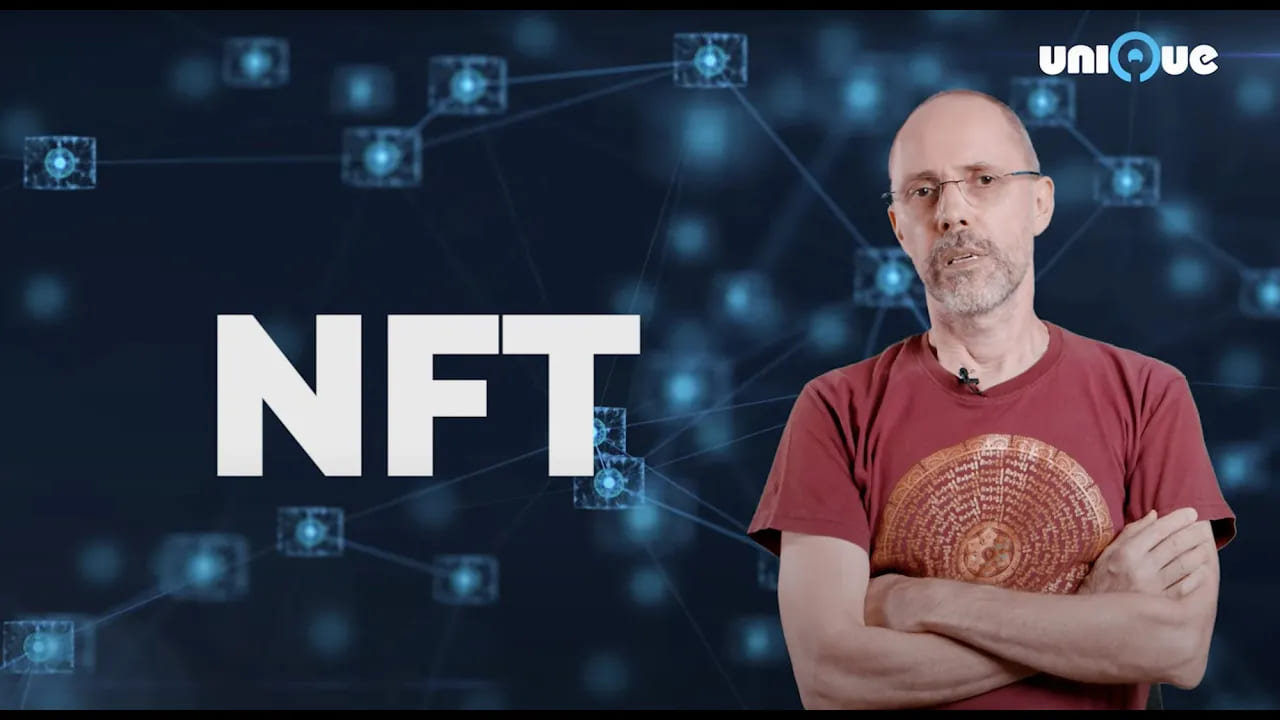
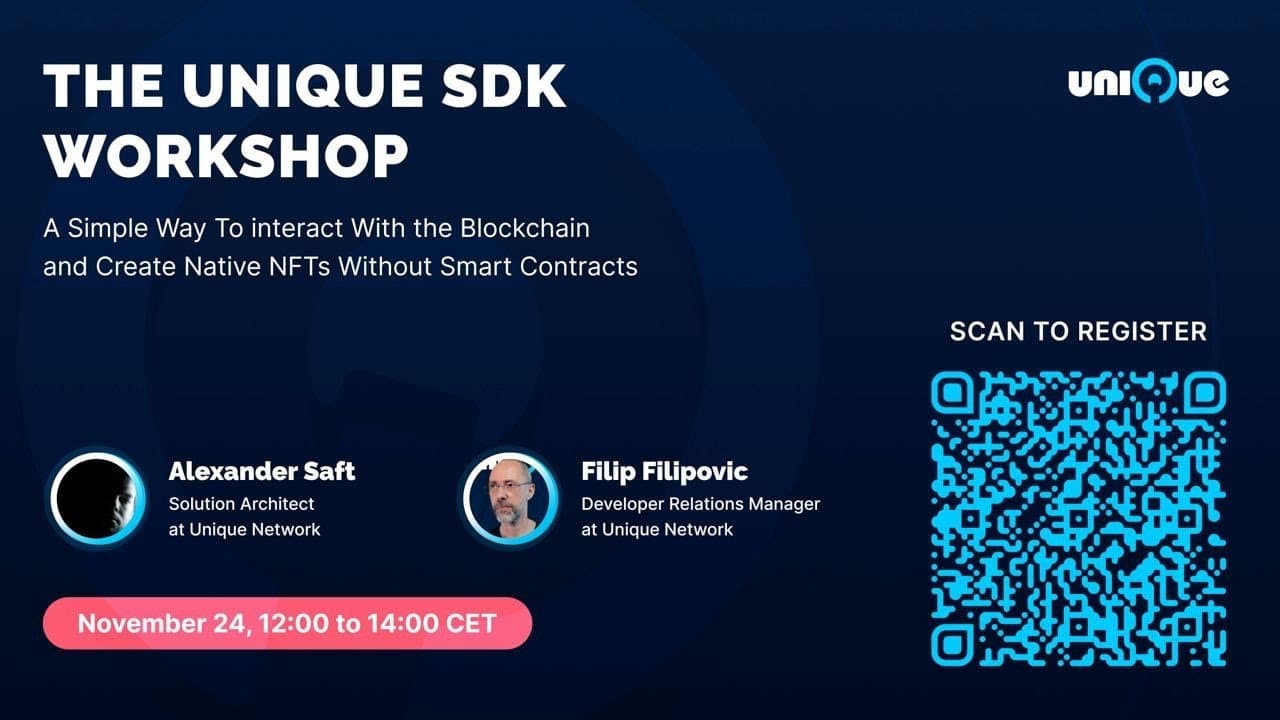
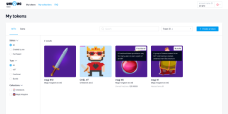
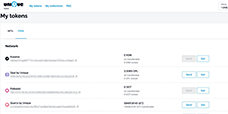

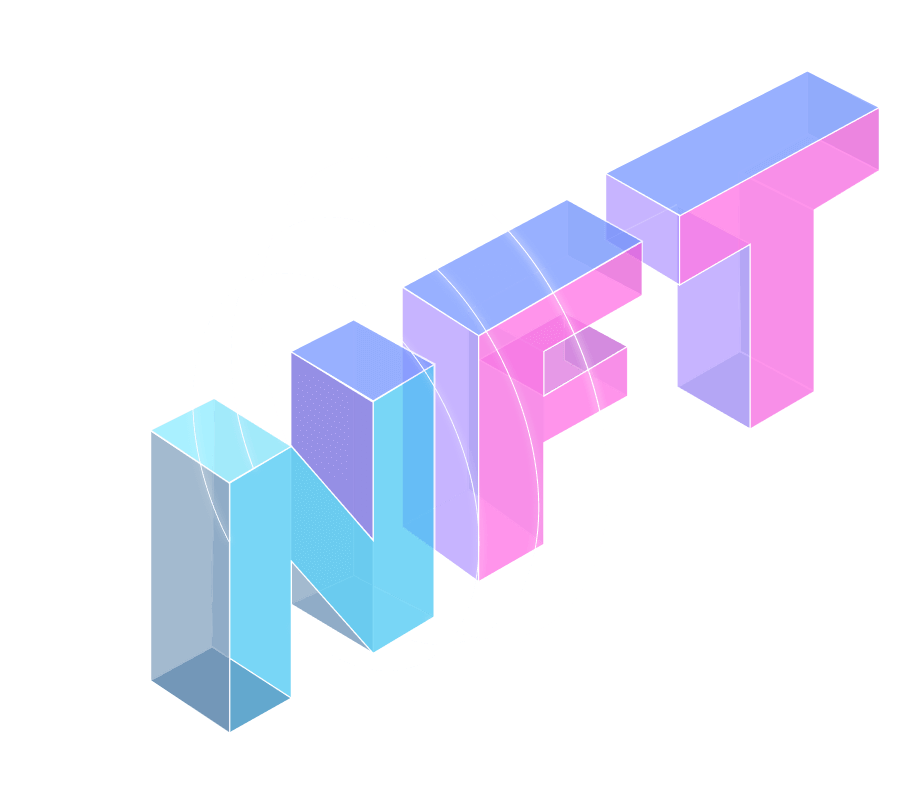
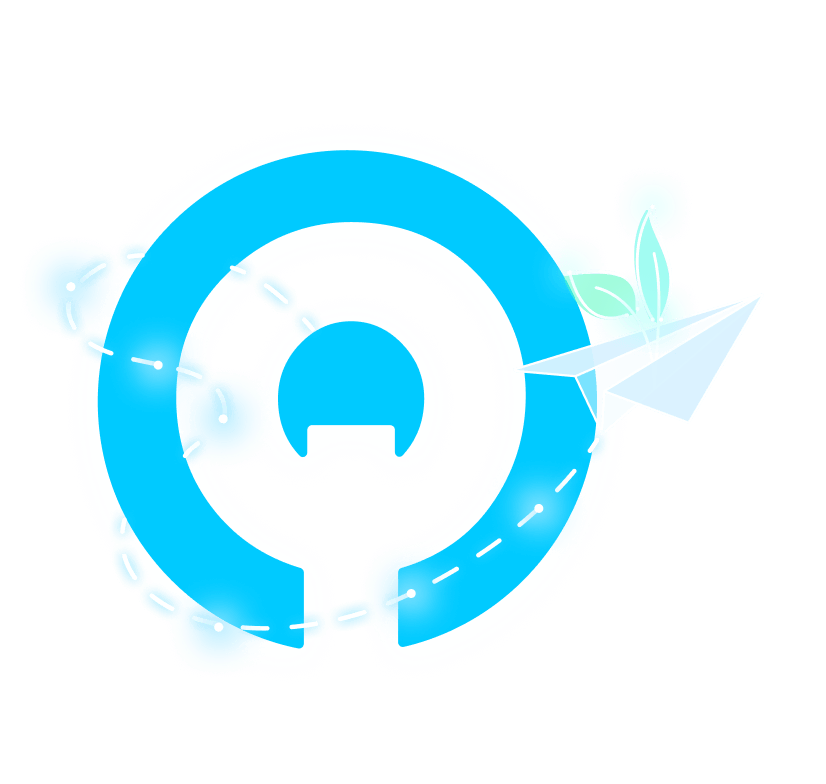
 by
Unique Network
by
Unique Network